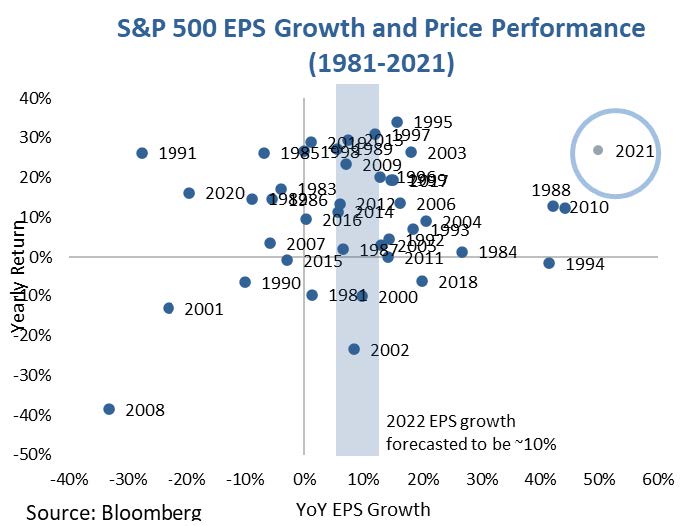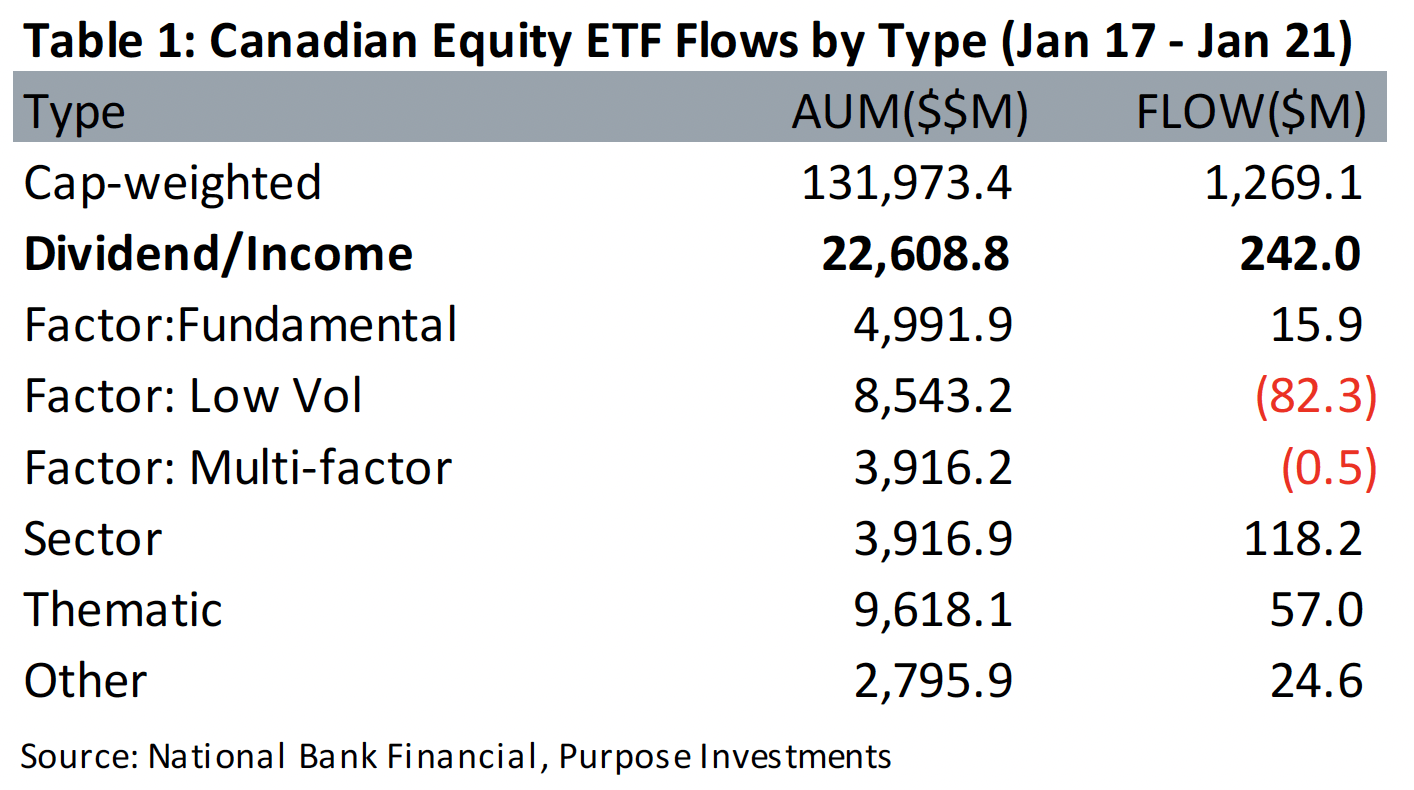So far, we’ve had quite the rollercoaster of emotions for investors this year, with many markets on the verge or even dipping their toe into correction territory. The recent large intra-day swings may make it seem like we’re nearer to the elusive capitulation day that often marks a bottom, but history would suggest such days are basically impossible to know in real time.
With volatility elevated, the risk of being wrong seems more punishing than at any point over the past 20 months. Conviction is important when investing, but conviction in and of itself means nothing if it’s not founded on rational decision making. Investors have short memories and are most captive to recent experiences. Buy the dip—wash, rinse, and repeat. The habit has been simple, reinforcing, and rewarding, most notably for a swath of new investors.
Bursting Bubbles
Looking back, it’s now clear that most high-growth/non-profitable tech stocks were in a big bubble. Well, the bubble has most definitely popped. This isn’t just a routine correction for this segment of the market. Oddly enough, we’re approaching the one-year anniversary of peak meme stock mania. Last January Gamestop (GME), AMC Entertainment (AMC), Blackberry (BB), and other names rose on the back of blog posts on Reddit and other platforms, cementing the term ‘meme stock.’
Companies rose based on how they could change the world. Since then, the road has been anything but paved with gold and filled with Lambos. Sure, some fortunes were made, Deep F’n Value had a memorable time in front of Congress, but the drawdowns for the highest flyers have been horrendous. The meme stock craze is done.
For some time, investors clamored to own the worst companies—that delusional market idea appears to be dead.
Over the past decade, there have been a number of localized bubbles that have burst, but none have the broad market risk of contagion quite like the potential of a mega-cap growth stocks going out of favour. Easy money, cash on the sidelines, and low interest rates have always been there for the rescue, but with rates rising and financial conditions becoming less accommodative, the path of least resistance appears now to be lower.
We’re not saying investors shouldn’t stay largely invested, because the risk of being out of the market if this is just a normal correction can be just as painful. But we would argue for the return of reason, investors should once again pay attention to valuations, scale back exposure to high-growth industries with overly optimistic growth assumptions, and instead refocus on portfolio allocation with balance in mind. The predicament many investors are finding themselves in is that they are still overpaying for growth. This is rooted in a couple of behavioural biases.
Overconfidence – Sometimes called the superiority illusion. It’s a tendency for most people to believe that they are above average—whether for their intelligence, sense of humour, driving ability, or investment skill—despite it being mathematically impossible for the majority to be above average. In investing, the overconfidence induces investors to take riskier bets. When markets have rewarded this type of risk-seeking behaviour, it only magnifies the optimism.
Overoptimism – Over-optimistic people will have an unrealistic expectation of how often they’ll get a good result versus a bad result. Strong recent performance makes it easier to feel optimistic about the future. Unsatisfied with just average market returns, these behavioural biases entice investors to increase exposure to risker investments.
These biases also cause increased trading activity. The gamification of many of today’s online trading apps/sites is meant to further increase transaction volumes. Lowering transaction costs usually is presumed to increase investor welfare; however, reducing the marginal costs associated with trading stocks may have the perverse and counterintuitive effect of decreasing investor welfare.
High earnings multiples are often a manifestation of high confidence, not necessarily strong earnings prospects. 2021 was a year with exceptionally high earnings growth and stock returns. Looking back into the past, this growth will be hard to follow up. The change is proving to be the undoing of growth investors reminded that high growth is the exception, not the rule.
When returns are easy to come by, it’s all too easy to be convinced of your own abilities. These hardwired biases are hard to eradicate especially when good performance only reinforces them. Often the best course of action is to follow simple advice: diversify and rebalance when necessary.
Prices matter, but a cheap price is not the same as value
The battle between Value and Growth will likely be drawn out for some time. There is a lot of room to make up and we would not be surprised to see higher market volatility as the two factors battle it out. Obviously, we have no idea if the bottom is in, but the excesses seen over the past couple of years are being let out and it’s a process that can take plenty of time. Interestingly, Canadian inflows into dividend-focused equity ETFs, which heavily tilt towards value continue to be strong, with the category adding over $240 million last week after adding over $110 million the week prior. All it takes is a change in investor appetite to cause one factor to fall out of favour. New Paragraph
Valuations have begun to matter, but there is a big difference between what is truly cheap and what is actually just down. This may not be the same thing. Rather than just looking at what stocks have fallen the most, focus on areas of the market that have enduring and sustainable growth. It’s good practice to have price targets where if hit, you should be acting. Targets and stop losses are simple ways to help take the emotion out of investment decisions and help mitigate behavioural mistakes.
Source: Charts are sourced to Bloomberg L.P. and Purpose Investments Inc.
The contents of this publication were researched, written and produced by Purpose Investments Inc. and are used by Echelon Wealth Partners Inc. for information purposes only.
This report is authored by Craig Basinger, Chief Market Strategist, Purpose Investments Inc.
The contents of this publication were researched, written and produced by Purpose Investments Inc. and are used herein under a non-exclusive license by Echelon Wealth Partners Inc. (“Echelon”) for information purposes only. The statements and statistics contained herein are based on material believed to be reliable but there is no guarantee they are accurate or complete. Particular investments or trading strategies should be evaluated relative to each individual's objectives in consultation with their Echelon representative.
Echelon Wealth Partners Ltd.
The opinions expressed in this report are the opinions of the author and readers should not assume they reflect the opinions or recommendations of Echelon Wealth Partners Ltd. or its affiliates. Assumptions, opinions and estimates constitute the author's judgment as of the date of this material and are subject to change without notice. We do not warrant the completeness or accuracy of this material, and it should not be relied upon as such. Before acting on any recommendation, you should consider whether it is suitable for your particular circumstances and, if necessary, seek professional advice. Past performance is not indicative of future results. The comments contained herein are general in nature and are not intended to be, nor should be construed to be, legal or tax advice to any particular individual. Accordingly, individuals should consult their own legal or tax advisors for advice with respect to the tax consequences to them.
Purpose Investments Inc.
Purpose Investments Inc. is a registered securities entity. Commissions, trailing commissions, management fees and expenses all may be associated with investment funds. Please read the prospectus before investing. If the securities are purchased or sold on a stock exchange, you may pay more or receive less than the current net asset value. Investment funds are not guaranteed, their values change frequently and past performance may not be repeated.
Forward Looking Statements
Forward-looking statements are based on current expectations, estimates, forecasts and projections based on beliefs and assumptions made by author. These statements involve risks and uncertainties and are not guarantees of future performance or results and no assurance can be given that these estimates and expectations will prove to have been correct, and actual outcomes and results may differ materially from what is expressed, implied or projected in such forward-looking statements. Assumptions, opinions and estimates constitute the author’s judgment as of the date of this material and are subject to change without notice. Neither Purpose Investments nor Echelon Partners warrant the completeness or accuracy of this material, and it should not be relied upon as such. Before acting on any recommendation, you should consider whether it is suitable for your particular circumstances and, if necessary, seek professional advice. Past performance is not indicative of future results. These estimates and expectations involve risks and uncertainties and are not guarantees of future performance or results and no assurance can be given that these estimates and expectations will prove to have been correct, and actual outcomes and results may differ materially from what is expressed, implied or projected in such forward-looking statements. Unless required by applicable law, it is not undertaken, and specifically disclaimed, that there is any intention or obligation to update or revise the forward-looking statements, whether as a result of new information, future events or otherwise.
Before acting on any recommendation, you should consider whether it is suitable for your particular circumstances and, if necessary, seek professional advice.
The particulars contained herein were obtained from sources which we believe are reliable, but are not guaranteed by us and may be incomplete. This is not an official publication or research report of either Echelon Partners or Purpose Investments, and this is not to be used as a solicitation in any jurisdiction.
This document is not for public distribution, is for informational purposes only, and is not being delivered to you in the context of an offering of any securities, nor is it a recommendation or solicitation to buy, hold or sell any security.



















